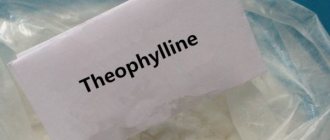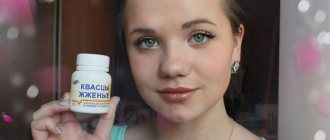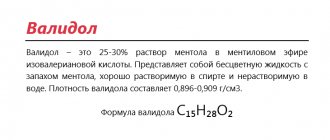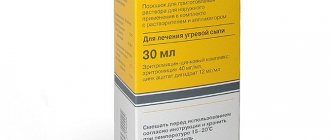Pharmacodynamics and pharmacokinetics
Streptocide is an antimicrobial bacteriostatic agent. It acts against pathogenic cocci, Shigella spp., Clostridium perfringens, Corynebacterium diphtheriae, Chlamydia spp., Toxoplasma gondii, Escherichia coli, Vibrio cholerae, Bacillus anthracis, Yersinia pestis, Actinomyces israelii. The medicine promotes accelerated wound healing and epithelization of erosions .
Wikipedia and other sites indicate sulfonamide as a synonym for streptocide . Its chemical name is 4-Aminobenzenesulfonamide and its formula is C6H8N2O2S.
Its action is based on competitive antagonism with PABA , disruption of the synthesis of tetrahydrofolic acid , as well as inhibition of dihydropteroate synthase .
Pharmacological properties
Streptocide disrupts the creation of so-called “growth factors” in microorganisms - folic and dehydrofolic acids, and other compounds that have PABA (PABA) in their molecule. Due to the similarity of the structures of PABA and Streptocide, sulfanilamide, as a competitive acid antagonist, is included in the metabolic chain of microorganisms and disrupts metabolic processes in it, which leads to a bacteriostatic effect.
Streptocide is a short-acting sulfonamide that exhibits a bacteriostatic effect against streptococci, meningococci, pneumococci, gonococci, Escherichia coli, pathogens of toxoplasmosis and malaria. Does not affect anaerobic microorganisms.
Indications for use
Streptocide helps against acne, as well as in the treatment of pyoderma , erysipelas , impetigo , purulent-inflammatory lesions of the skin, carbuncles , folliculitis , acne , first and second degree burns, infected wounds of various origins.
Previously, Streptocid throat tablets were used, which were produced in the Russian Federation until 2008. Now the powder can be used for sore throat . It effectively helps with sore throat.
This remedy is also used for infections of the skin, ENT organs, respiratory and urinary tracts. It is possible to use Streptocide powder for wounds and as a prophylactic agent; it, like Streptocide ointment, is soluble.
What tablets, powder or liniment will help in this or that case, it is better to consult a doctor.
What is Streptocide powder
According to its pharmacological action and composition, Streptocide powder belongs to the group of sulfonamides, antimicrobial drugs for the treatment of skin diseases. The product has a white crystalline texture and is odorless; it is a chemotherapy drug with a selective bacteriostatic effect. It is used for inflammatory diseases of the throat, and is used externally to treat wounds or purulent lesions of the skin.
The effectiveness of the drug is manifested in relation to strepto-, meningo-, gono-, pneumococci, Escherichia coli, Proteus. Sulfanilamide inhibits the reproduction of infectious disease pathogens, which makes the body's defenses stronger. The medicine is a short-acting drug for systemic use. It can be produced in the format of tablets, ointments, liniment.
Contraindications
This drug has the following contraindications: hypersensitivity to sulfonamides , anemia , congenital deficiency of glucose-6-phosphate dehydrogenase , porphyria , diseases of the hematopoietic system, renal and liver failure , azotemia .
The use of Streptocide tablets is also contraindicated for thyrotoxicosis , nephrosis , nephritis , Graves' disease .
What drugs can be replaced?
Is there a need to select an analogue that is similar in properties, instructions for use and price? For some reason, do you want to know what you can replace the Streptocide solution or powder with? Here is a comparative table of analogues with approximate prices (Streptocid powder itself costs around 30-35 rubles).
| What can replace Streptocide? | Release form | approximate price |
| Ointment, cream for external use | ||
| Berodual | ||
| Argosulfan | Cream for external use | |
| Trichopolum | Tablets, solution | |
| Bi-Sept-Pharma | Tablets, cream, ointment | |
| Sulfalene | Pills | |
| Celederm | Cream, ointment for external use | |
| Synthomycin liniment | Cream for external use |
Please note that all of the listed creams, ointments, solutions and tablets are not complete analogues of Streptocide, as they have different compositions and different indications for use. Before you start using them, be sure to consult your doctor (he will determine whether the chosen product is suitable). The same applies to the Streptocid powder itself - you should not self-medicate and choose your own medicine, focusing only on reviews on the Internet. The doctor selects the medications based on a confirmed diagnosis and examination of the patient’s condition.
The price of streptocide (powder 2 g) is 30-50 rubles.
Side effects
When using the product allergic reactions , in addition, the following side effects are observed: headache , paresthesia , nausea, dyspepsia , agranulocytosis, cyanosis , dizziness , tachycardia , vomiting, leukopenia , crystalluria .
Tablets can also cause diarrhea , and in rare cases nephrotoxic reactions, thrombocytopenia , hypoprothrombinemia , eosinophilia , visual impairment, peripheral neuritis , hypothyroidism , ataxia .
Interaction with other drugs and other types of interactions
When used simultaneously:
- With nonsteroidal anti-inflammatory drugs, sulfonylurea derivatives, anticoagulants, vitamin K antagonists, the effect of these drugs is enhanced;
- With folic acid, bactericidal antibiotics (including penicillins, cephalosporins) - the effectiveness of sulfonamides is reduced;
- With bactericidal antibiotics, oral contraceptives - the effect of these drugs is reduced;
- With PAS and barbiturates - the activity of sulfonamides increases;
- With erythromycin, lincomycin, tetracycline - antibacterial activity is mutually enhanced, the spectrum of action is expanded;
- Rifampicin, streptomycin, monomycin, kanamycin, gentamicin, oxyquinoline derivatives (nitroxoline) - the antibacterial effect of the drugs does not change;
- With nalidixic acid (nevigramon) - antagonism is sometimes observed;
- With chloramphenicol, nitrofurans - the total effect is reduced;
- With drugs containing PABA esters (novocaine, anesthesin, dicaine), the antibacterial activity of sulfonamides is inactivated;
Sulfonamides are not prescribed simultaneously with hexamethylenetetramine (urotropine), with antidiabetic drugs (sulfonylurea derivatives), with definin, neodicoumarin and other indirect anticoagulants.
Streptocide may enhance the effect of methotrexate due to its displacement from protein binding and/or weakening of its metabolism.
When used simultaneously with other drugs that cause bone marrow suppression, hemolysis, or hepatotoxicity, there is a risk of developing toxic effects.
Concomitant use with Methenamine (urotropine) is not recommended due to the increased risk of developing crystalluria due to an acidic urine reaction.
Phenylbutazone (butadione), salicylates and indomethacin can displace sulfonamides from binding to plasma proteins, thereby increasing their concentration in the blood. When used with para-aminosalicylic acid and barbiturates, the activity of sulfonamides increases; with chloramphenicol - the risk of developing agranulocytosis increases; with preparations containing para-aminobenzoic acid esters (novocaine, anesthesin, dicaine), the antibacterial activity of sulfonamides is inactivated.
Instructions for use Streptocide (Method and dosage)
For those who use Streptocid ointment, the instructions for use indicate that the product is intended to be applied in a thin layer to the affected skin. Thus, the product is applied topically and externally. In addition, liniment 10 and 5% can be spread on a gauze pad, which is changed every 1-2 days.
The powder is applied directly to the affected areas. For deep wounds, it is introduced into the wound cavity in a dosage of 5 to 15 g. For those who use Streptocide powder, the instructions for use also indicate that dressings can be done every 1-2 days.
Tablets are administered orally at a dosage of 0.5 g 5-6 times a day. The maximum dosage is 2 g at a time. The instructions for Streptocide state that you should not take more than 7 g per day. Tablets for children are taken in the following dosage at a time:
- age up to 1 year – 0.05-0.1 g;
- age 2-5 years – 0.2-0.3 g;
- age 6-12 years – 0.3-0.5 g.
Soluble Streptocide is used in the same way as a similar product in the form of a regular ointment.
In addition, it is possible to use the powder for sore throat . It helps if the disease has already begun to progress, but has not yet penetrated the internal tissues. Lightly dust the mucous membrane of the throat and tonsils with the powder, and after 10 minutes rinse with a disinfectant solution. It is recommended to repeat the procedure every 2 hours.
If the disease has just begun to manifest itself, it is acceptable to use throat tablets. The tablet should be crushed into powder and mixed with a teaspoon of honey. This remedy is taken before bedtime. The effect can be noticed the very next day.
In addition, when using the drug during a sore throat , it is very important to follow the correct diet. Food should be liquid and warm, without a lot of spices and hot sauces. Drinking grapefruit and lemon juices is especially beneficial. These drinks have a beneficial effect on the immune system .
Compound
Powdered Streptocide is available in 2, 5 or 10 g quantities. This also changes the concentration of sulfonamide (the active component). Known form of release: laminated bags, paper bags, bottles, jars. In addition to crystalline powder, the following types of medicine are distinguished:
- Tablets of 0.3 and 0.5 g of active substance in contour-free packaging of 10 pieces. The tablet contains 300 or 500 mg of sulfonamide, starch, talc, stearic acid.
- Streptocide ointment - 5 or 10% on a vaseline basis. Available in cans, tubes, containers of 15, 25, 30 and 50 g. Per 100 g of ointment there are 5 or 10 g of streptocide.
- Streptocide liniment – 5% concentration, 5 g of streptocide, additional substances include fish and animal fats, lime water. Release form: cans of 25, 30 and 50 g.
- Streptocide suspension – 5%, contains 5 g of streptocide. Auxiliary components – emulsifier, thymol (sodium salicylate), distilled water.
- Soluble streptocide – 0.5 g, white powder, highly soluble with iodine and water. Taken orally and parenterally, subcutaneously, intramuscularly, intravenously.
Overdose
In case of an overdose of the drug, nausea, intestinal colic , headache , depression , confusion , fever , crystalluria , vomiting, dizziness , drowsiness , fainting, blurred vision, hematuria . Long-term use of the drug in high doses is fraught with the appearance of thrombocytopenia , megaloblastic anemia , leukopenia , and jaundice .
In case of overdose, drinking plenty of fluids is recommended. If a large dose was taken accidentally, gastric lavage is performed.
Analogs
Level 4 ATC code matches:
Dermazin
Argosulfan
Ebermin
The following analogues of the drug are common:
- Streptotsid-Darnitsa;
- Sulfadimezin.
They are sold in tablets. All analogues have their own application characteristics, so before using any of these drugs you should carefully read the instructions.
Is it dangerous to use?
Sometimes there is information that Streptocide is a strong toxin and poisons a person’s orgasm. It is not true. But then where did the opinion come from that a person cannot be treated with this antibiotic? The fact is that chemists initially came up with a drug called “red streptocide.” It was used in the textile industry, but the new chemical was found to be able to quickly kill germs. This property interested doctors, and they began to study red streptocide.
At the beginning of the last century, red streptocide was given to people in its pure form. The remedy dealt with infections instantly (this saved many people from amputation of limbs). But the side effects were catastrophic. It turns out that the original streptocide in the human body is broken down into sulfonamide (white streptocide) and toxic 1,2,4-triaminobenzene.
As a result, in the 20s of the last century, scientists abandoned the use of red powder in the treatment of people, and began to use only white streptocide, because it has a therapeutic effect and does not contain toxins that poison humans. The modern remedy is completely safe for treatment (no more dangerous than hydrogen peroxide), if, of course, you take it strictly according to the instructions.
Streptocide price, where to buy
This product is considered very affordable. So the price of ointment in pharmacies is about 20 rubles. And the cost of the powder may depend on the form of release. It can be bought in a bottle, jar, or bags. The price of Streptocide powder in a bottle or jar is approximately 40 rubles. And the cost of the product in packages is about 30 rubles. The price of Streptocide in tablets is not indicated anywhere, since this product has not been on sale since 2008.
- Online pharmacies in RussiaRussia
- Online pharmacies in UkraineUkraine
- Online pharmacies in KazakhstanKazakhstan
ZdravCity
- Streptocide powder
d/ext. approx. package 2g No. 1OJSC Ivanovskaya pharmaceutical factory 23 RUR order - Streptocide soluble liniment 5% 30g JSC "Nizhpharm"
84 rub. order
- Streptocide powder for external use. approx. 2gZAO FP Meligen
17 RUR order
- Streptocide por. d/nar. approx. package 5g No. 1 NOT DEFINED
57 RUR order
- Streptocide powder for external use. approx. 2g LumiLumi LLC
29 RUR order
Pharmacy Dialogue
- Streptocide (port. 2g No. 1)Doctor
33 rub. order
- Streptotsid (por. 2g No. 1) Lumi LLC
19 rub. order
- Streptocide ointment (can 10% 25g) YAF
61 rub. order
- Streptocide liniment sol. (tube 5% 30g) Nizhpharm JSC
80 rub. order
- Streptocide ointment (tube 10% 25g) Biosynthesis OJSC
68 RUR order
show more
Pharmacy24
- Streptocide ointment 10% 25 g Ternofarm TOV, m. Ternopil, Ukraine
8 UAH. order - Streptocide ointment 10% 25 g tube PAT "Lubnifarm", Ukraine
9 UAH order
- Streptocid 0.3 g N10 tablets Ternopharm TOV, Ternopil, Ukraine
3 UAH order
- Streptocidal ointment 10% 25 g PrAT FF "Viola", Ukraine
9 UAH order
- Streptocidal ointment 10% 25 g PrAT FF "Viola", Ukraine
11 UAH order
PaniPharmacy
- Streptocide ointment Streptocide ointment 10% 25g Ukraine, Lubnyfarm PJSC
10 UAH.order
- Streptocide tablets Streptocide tablets. 0.5g No. 10 Ukraine, Ternopharm LLC
6 UAH order
- Streptocide tablets Streptocide tablets. 0.3g No. 10 Ukraine, Ternopharm LLC
3 UAH order
- Streptocide ointment Streptocide ointment 5% 25g ind. pack Ukraine, Viola FF CJSC
11 UAH order
- Streptocid tablets Streptocid tablets 0.3g No. 10 Ukraine, Darnitsa ChAO
5 UAH order
show more
How to take the product if you are infested with ticks?
Doctors often prescribe a solution of demodicosis powder. How to take Streptocid if you need to treat demodicosis? The instructions for use are very simple and, judging by the reviews, do not cause difficulties for patients.
First you need to do the preparation. To make the use of Streptocide against demodicosis more effective, you must first clean and warm the skin of the face affected by the demodex mite. To do this, you can wash your face with hot water, but it’s better to hold your head in a water bath (pour boiling water into a basin or pan, lower your head into the steam emanating from the water and make a “house” out of a towel on top). You must act carefully - skin affected by demodicosis is sensitive; Make sure there is no burn, otherwise the pain will be very severe.
As a result of the preparatory procedure, the pores open and mites that love warmth and moisture come out (they are small and cannot be seen with the naked eye). You need to start treating the skin immediately. To do this, you will need soluble Streptocide - a third of a teaspoon of powder or 2-3 tablets (for the treatment of demodicosis, this amount of Streptocide is more than enough). Dissolve the drug in water until a paste forms or simply crush it into dust and apply it in dry form to areas of the skin damaged by demodicosis.
According to the instructions, the procedure for treating demodicosis using the drug Streptocide soluble is best done before bedtime, so that the skin calms down a little by the morning. The course of treatment is usually 5-6 days. If there is no improvement during this time, it means that the infection is too strong and more powerful remedies are required - consult a doctor and ask to find a suitable medicine against demodicosis.
In addition to demodicosis, the antibiotic Streptocid can be used to treat other diseases.
- Sore throat and other causes of sore throat.
For throat diseases, ointments and creams are not suitable (according to the instructions, they are used only externally); you need powder or crushed tablets. The antibiotic Streptocide is used very often for angina. The areas in the throat affected by bacteria (those that hurt the most, become red and inflamed) are treated with powder. Leave for 10 minutes, and then gargle with a disinfectant solution (for example, a solution of diluted hydrogen peroxide).
The procedure must be repeated as much as possible - at least once an hour. It is best to treat a person with the antibiotic Streptocide in the very first days of the illness, then the inflammation and pain will go away within a couple of hours. If the disease is more advanced, then the pain and redness will go away for several days.
- Burns, wounds, pimples, follicles, carbuncles, boils
Streptocide for acne, wounds, and burns on the skin is used to disinfect the damaged area, prevent suppuration and inflammation, and dry it. Streptocide for acne, skin wounds and burns should be used within 2-3 days - morning and evening. If there is already suppuration in the wound, then before applying streptocide, the sore spot should be treated with diluted hydrogen peroxide.
It is best to prepare a mask called “chatterbox” for the treatment of wounds and acne: take 5 tablets of chloramphenicol, 2 grams of Streptocide powder and a couple of drops of one percent salicylic acid. All these substances can be easily purchased at any pharmacy. The price for them is small - within 30 rubles for each ingredient.
- Trophic ulcers and bedsores
Trophic ulcers and bedsores occur due to disruption of blood supply to the tissue. The reasons for the development of trophic ulcers can be different. They can occur due to arterial insufficiency, diabetes mellitus, and venous expansion. Bedsores appear when a person is immobilized.
Trophic ulcers and bedsores are an extremely unpleasant and dangerous disease. Experiments with treatment will not work; truly proven treatment methods are needed. Against diseases such as trophic ulcers and bedsores, the use of Streptocide in the form of a compress is suitable.
The instructions for making a compress against trophic ulcers and bedsores are extremely simple: a trophic ulcer or bedsores is treated with hydrogen peroxide, sprinkled with streptocide powder (or a crushed tablet), and a bandage soaked in a peroxide solution (water with a couple of drops of hydrogen peroxide) is applied on top. Then wrap the area with the ulcer in cellophane and a warm bandage (a down scarf works great). The compress is changed 2-3 times a day.
- Stomatitis in adults and children
Doctors often prescribe for patients with stomatitis to rinse the mouth with Streptocide dissolved in water. It disinfects and dries, in addition, reduces inflammation and eliminates pain. The only thing is that powder with water is not the most delicious product, and for many it can cause a gag reflex. That's why you can try replacing it with a folk recipe for stomatitis: streptocide, water, honey and a little butter - this combination for treatment will be more pleasant and convenient for rinsing your mouth.






